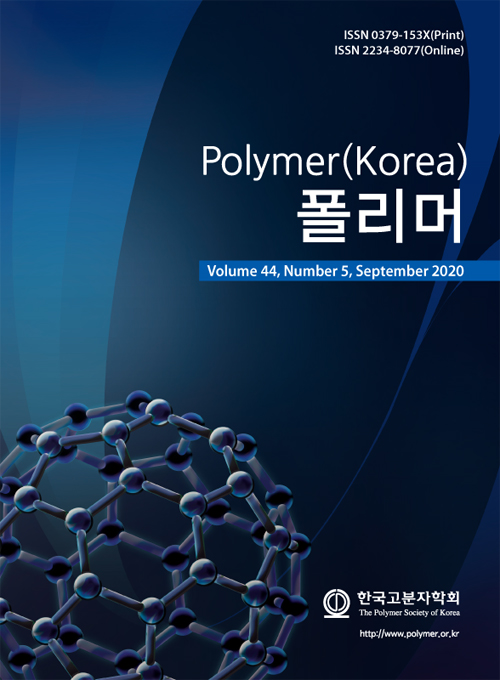- Drop Weight Impact and Tension-Tension Loading Fatigue Behaviour of Jute/Carbon Fibers Reinforced Epoxy-based Hybrid Composites
Zamurrad Arshad, Muhammad Ali Nasir, Yasir Baig*, Muhammad Zeeshan**, Rizwan Ahmed Malik***, Khubab Shaker**, Azhar Hussain***, M. Latif****, Maryam Sattar*****, and Hussein Alrobei******,†

Department of Mechanical Engineering, University of Engineering and Technology, Taxila, Pakistan
*Beijing University of Aeronautics and Astronautics, No. 37 Xueyuan Road, Beijing, CN 100191
**National Textile University, Faisalabad, Pakistan
***Department of Metallurgy and Material Engineering, University of Engineering and Technology, Taxila, Pakistan
****Department of Mechanical Engineering, Inha University, Incheon, Korea
*****Department of Mechanical Engineering, Institute of Space Technology, Islamabad, Pakistan
******Department of Mechanical Engineering, College of Engineering, Prince Sattam bin Abdul aziz University, AlKharj, Saudi Arabia- Jute/Carbon Fiber로 강화된 Epoxy-based Hybrid 복합재료의 Drop Weight Impact 및 Tension-Tension Loading Fatigue 거동
This work focuses on the
synthesis of a novel hybrid composite, fabricated by utilizing jute and carbon
fibers reinforced epoxy composites through hand layup technique to replace pure
carbon-epoxy fiber composites. The mechanical properties were evaluated by drop
weight impact and tension-tension fatigue tests. The tension-tension fatigue
test was conducted to monitor the dynamic stiffness and fatigue life
degradation of hybrid composite materials by varying the layers of jute fiber.
The maximum peak load during the impact test was observed as 1081.7 N in
case of carbon/jute/carbon/jute/carbon (CJCJC) stacking sequence composite
materials. Finally, the surface morphology of hybrid composite materials was
studied with scanning electron microscopy (SEM) after mechanical tests to check
the delamination, fiber pull-out and matrix cracks. It can be concluded from
the obtained mechanical results that the newly developed composite with 15%
jute/carbon-epoxy hybrid materials has the potential to swap carbon-epoxy
composite without much loss of fatigue life along with relatively enhanced
ductility as well as impact strength.
Keywords: carbon, jute, hybrid composites, fatigue test, impact test, SEM morphology
- Polymer(Korea) 폴리머
- Frequency : Bimonthly(odd)
ISSN 0379-153X(Print)
ISSN 2234-8077(Online)
Abbr. Polym. Korea - 2023 Impact Factor : 0.4
- Indexed in SCIE
 This Article
This Article
-
2020; 44(5): 610-617
Published online Sep 25, 2020
- 10.7317/pk.2020.44.5.610
- Received on Mar 18, 2020
- Revised on Apr 30, 2020
- Accepted on May 6, 2020
 Correspondence to
Correspondence to
- Hussein Alrobei
-
Department of Mechanical Engineering, College of Engineering, Prince Sattam bin Abdul aziz University, AlKharj, Saudi Arabia
- E-mail: h.alrobei@psau.edu.sa








 Copyright(c) The Polymer Society of Korea. All right reserved.
Copyright(c) The Polymer Society of Korea. All right reserved.